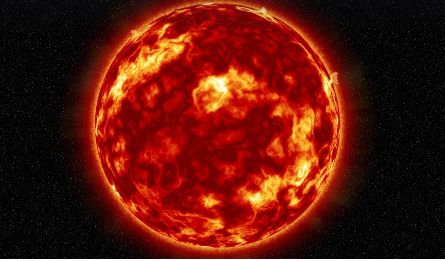
(Photo : pixabay.com)
- A severe solar storm, a result of a coronal mass ejection (CME), hit Earth on Thursday, reaching G4 levels.
- The storm could disrupt communication systems, stress power grids, degrade GPS services, and hamper hurricane recovery efforts.
- The North American Electric Reliability Corporation (NERC) warned of a possible geomagnetic disturbance (GMD) affecting its system.
- The storm coincides with the peak of Solar Cycle 25 and the appearance of Comet C/2023 A3, offering a rare spectacle of nature's power.
The US National Oceanic and Atmospheric Administration (NOAA) has reported a severe solar storm hitting Earth on Thursday. This storm, a result of a coronal mass ejection (CME) that erupted from the sun on Tuesday evening, reached Earth at 11:15 a.m. Eastern Time, traveling at nearly 1.5 million miles per hour (2.4 million km per hour). The Space Weather Prediction Center (SWPC) of NOAA reported that the storm had reached G4 (Severe) levels. A G4 or greater Geomagnetic Storm Watch remains in effect Thursday and into Friday. The SWPC has been issuing multiple warnings and alerts for geomagnetic storm conditions, indicating the severity of the situation.
Potential Impacts of the Solar Storm
The potential impacts of this storm are far-reaching. It could cause significant disruptions to communication systems, put stress on power grids, and degrade GPS services. These effects could severely hamper the ongoing recovery efforts for hurricanes Helene and Milton. In a spectacle of nature's power, the aurora could be visible as far south as Alabama and northern California Thursday night, provided the skies are clear. CMEs, which are essentially explosions of plasma and magnetic fields from the sun's corona, cause geomagnetic storms when they are directed at Earth.
Reports of skies lit afire in color along the Eastern Time Zone where the sun had already set stretched from Boston through New York City, Washington, DC, and even into the Southeast. For best viewing conditions, it is recommended to find a place away from city lights with a clear view of the northern horizon.
Preparedness and Response to the Solar Storm
The SWPC confirmed that FEMA and numerous state agencies have been alerted to potential impacts on their ongoing recovery efforts. The storm could also affect agricultural navigation and communication systems. Farmers, for instance, may have to stop fieldwork and wait for the storm to pass or accept the inaccuracies that follow due to GPS disruptions.
The North American Electric Reliability Corporation (NERC) has issued a warning that a possible geomagnetic disturbance (GMD) could affect its system until 2 a.m. on Oct. 11. While PJM, a regional transmission organization, said it does not expect major impacts to its system, the organization emphasized that "severe GMD warnings are not common." When a GMD is identified, PJM "issues a GMD Action and operates the system with more conservative power limits, in case the unexpected additional power from the GMD flows onto the system," it noted.
The storm's arrival coincides with the peak of Solar Cycle 25, which has been much more active than predicted. Each solar cycle lasts about 11 years, and this one has been particularly eventful. Adding an element of spectacle to this celestial drama, Comet C/2023 A3, also known as Tsuchinshan-ATLAS, is making its grand appearance. This spectacle became visible to NASA 's Solar and Heliospheric Observatory (SOHO) on October 7, 2024, and will stay on our radars until around October 11, 2024.
* This is a contributed article and this content does not necessarily represent the views of btin.co.in









